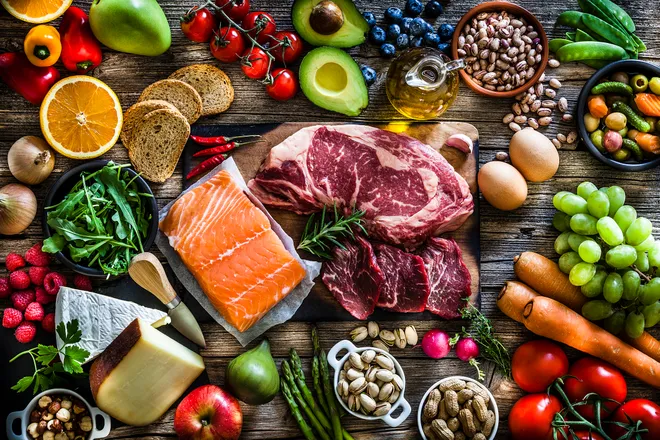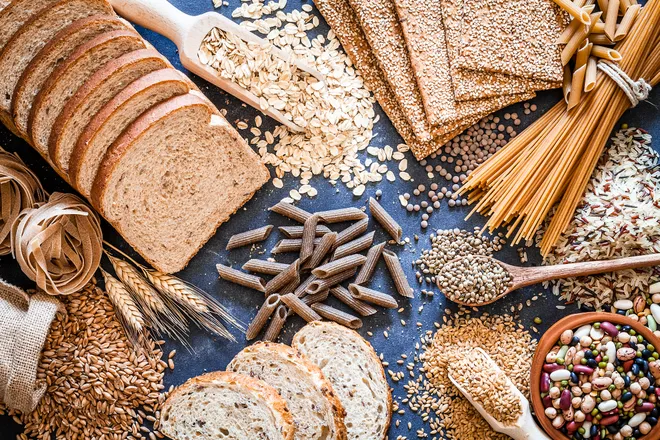Move over, Mediterranean diet. The Atlantic diet is here. Foods, health benefits, explained

A way to eat healthy, reduce the risk of health complications and still enjoy lots of bread and pasta? That's the kind of diet that will pique the interest of carb-lovers everywhere.
According to a recent study published inJAMA Network, the Atlantic diet may be a beneficial new option for people looking to simplify and improve their nutrition.
Similar to the Mediterranean diet, the Atlantic diet is inspired by the eating habits of people living in a specific region, specifically parts of Spain and Portugal. The study found that after six months, those who followed the Atlantic diet had a significantly decreased risk of developing metabolic syndrome, a cluster of conditions that can include obesity, high blood pressure, high blood sugar, triglyceride or cholesterol levels, and lead to the development of cardiovascular disease and type 2 diabetes.
Like similar eating patterns, the Atlantic diet sticks to foods we already recognize as minimally processed and healthy, such as fruits and vegetables, but also entails eating a lot of starchy foods, like bread and pasta.
It also dictates some ways in which food is cooked and served, increasing not only nutritional value and tastiness but also encouraging the creation of dishes that can be easily shared. Here's what to know about the Atlantic diet:
Finding good vitamins:Should you take daily vitamins? If so, which ones? What to know about benefits, marketing
What is the Atlantic diet?
The Atlantic diet is a cousin to the Mediterranean diet, which is linked to a lower risk of heart disease and stroke, improved brain, gut and cardiovascular health, reduced cancer risk and reduced risk of diabetes, Parkinson's and Alzheimer's, among other benefits.
The Atlantic diet is also derived from the traditional eating habits of people in northwestern Spain and Portugal, a population well known for a low rate of cardiovascular disease. Like the Mediterranean diet, it focuses on whole, unprocessed and fresh foods, including veggies and fruits, nuts, whole grains, fish, dairy, eggs, olive oil and other seasonal nutrition sources.
The Atlantic diet also incorporates these food groups and likewise focuses on fresh, whole foods, but instead mixes up which food types make up the bulk of what is eaten in a day. Carbs and starches are foundational to the Atlantic diet, which calls for the consumption of foods like bread, pasta, cereal and rice six to eight times per day.
Olive oil and wine commonly accompany meals, and animal products primarily consist of eggs, milk and cheese, fish and seafood and beef and pork.
What food is in the Atlantic diet?

The Atlantic diet focuses on local, seasonal, fresh whole foods, such as fruits, vegetables, nuts, breads, beans, fish and seafood, milk products and lean meats. Olive oil is a common condiment and wine is present in moderation at meals. The food groups in the diet are varied and focus a lot on carbs and common cooking methods include stewing, broiling, grilling and baking.
Primary foods in the diet include:
- Olive oil
- Fresh seasonal vegetables
- Fresh seasonal fruit
- Red and white wine (in moderation)
- Bread
- Cereal
- Pasta
- Potatoes
- Milk and cheese
- Fish and seafood
- Lean meat, beef and pork
- Eggs
- Nuts, especially almonds, walnuts, chestnuts, hazelnuts
- Dry peas, beans, lentils and chickpeas, known as pulses
How is it different from the Mediterranean diet?
While both diets come from a similar region, the Atlantic and Mediterranean diets differ primarily in food group concentration. While both focus on whole, fresh food, the Mediterranean diet is more plant-forward with grains and a smaller amount of carbs, meat and animal products built in.
The Atlantic diet may be more appealing to some thanks to its heavier focus on starches. Red meats are also generally avoided in the Mediterranean diet but are present in moderation in the Atlantic diet. Cooking and serving methods are also more important to the Atlantic diet, as it focuses on preparing food in ways that both promote nutritional value, such as stewing, and that promote communal eating.
Atlantic diet recipe examples

Meals that adhere to the Atlantic diet will look fresh and varied with foods from different minimally processed food groups. Some example recipes may look like:
- Baked cod with lemon and garlic
- Ground beef and sweet potato skillet
- Toasted skillet whole-grain breakfast cereal
- Yogurt with grape-nut cereal and honey
- Beef and vegetable stew
Healthier options on the go:Does healthy fast food exist? Look out for this type of menu for the healthiest option.
Disclaimer: The copyright of this article belongs to the original author. Reposting this article is solely for the purpose of information dissemination and does not constitute any investment advice. If there is any infringement, please contact us immediately. We will make corrections or deletions as necessary. Thank you.







